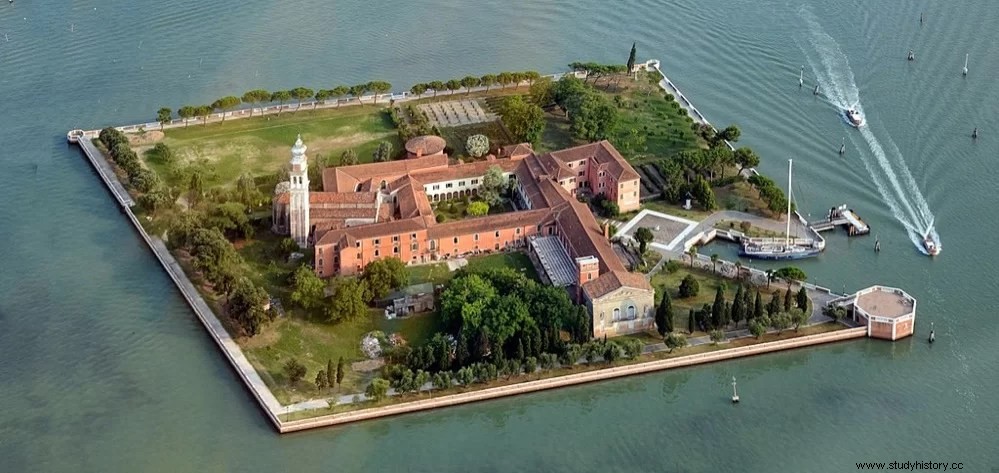Vittoria Dall'Armellina was visiting the Museum of the monastery located on the small Venetian island of San Lázaro de los Armenios when she was struck by a small sword, placed in a glass case along with some medieval objects. The doctoral student noted that this did not appear to be a medieval find, but rather a much older sword, very similar to others seen in her studies.
His thesis and doctorate focus on the birth and development of the sword in the Near East, so that sword seemed very similar to some weapons from about five thousand years ago found inside the Royal Palace of Arslantepe (Eastern Anatolia), and considered the oldest swords in the world.
After verifying that the sword was not present in the catalog of antiquities of the Near East that is kept in the museum of the island of the Armenians, according to Elena Rova, professor of archeology in the Department of Humanistic Studies and her doctoral supervisor, Dall 'Armellina continued the investigation to verify her intuition and clarify the dark points of the discovery.

Scientific analyzes confirmed that the sword is similar to the oldest swords in the world, dating back to 3000 BC, not only in its shape, but also in its alloy composition.
An Anatolian weapon, therefore, which reappears almost by chance in Venice. But what is his story? How did you come to the monastery and what could be the link with the community of the Armenian Fathers? Who did it belong to and to what distant lands would it have travelled? The answers were found in the archive of the Mequitarist monastery of San Lázaro de los Armenios.
The sword came from Trebizond to Venice donated by a merchant and art collector, Yervant Khorasandjian, in the second half of the 19th century. He is attested to by an envelope containing a pamphlet written in Armenian, rather ruined but copied by someone on modern paper, which speaks of a donation (there is a list of objects) to Father Ghevond (Leonzio) Alishan. It is also noted that the finds, including the sword, were found near Trebizond, in a town called Kavak.

We know that Ghevond Alishan, famous poet and writer, friend of John Ruskin, monk of the Mechitarist congregation and passionate archaeologist, died in Venice in 1901. Therefore, the story probably takes place in the last decades of the century. XIX. The ticket that accompanied the sword was used as Ariadne's thread to reconstruct the trip to Venice, giving scholars important information about the origin of Anatolia.
The analyzes of the metal composition were carried out in collaboration with Professor Ivana Angelini and the CIBA (Interdepartmental Research Center for the Study and Conservation of the Archaeological, Architectural and Historic-Artistic Heritage) of the University of Padua. Like other similar extant examples, the sword is made of arsenic copper:an alloy frequently used before the diffusion of bronze (alloy of copper and tin). This data and the marked similarity with the twin swords of Arslantepe found in a well-documented context made it possible to date the find with certainty between the end of the 4th and the beginning of the 3rd millennium BC. and confirm its relevance to a rather rare typology.
These types of swords are widespread in a fairly restricted region of eastern Anatolia, between the upper reaches of the Euphrates River and the southern coast of the Black Sea. Trace element analysis will further clarify the origin of the metal from a specific deposit.
But the Venetian specimen, unlike some of those from Arslantepe, is undecorated:it bears no inscription, no frieze, no distinguishing marks. Due to non-optimal storage conditions, no trace of use could be detected on the sword. Therefore, it could be an actual offensive weapon, used in combat, or a parade weapon or funerary item.
